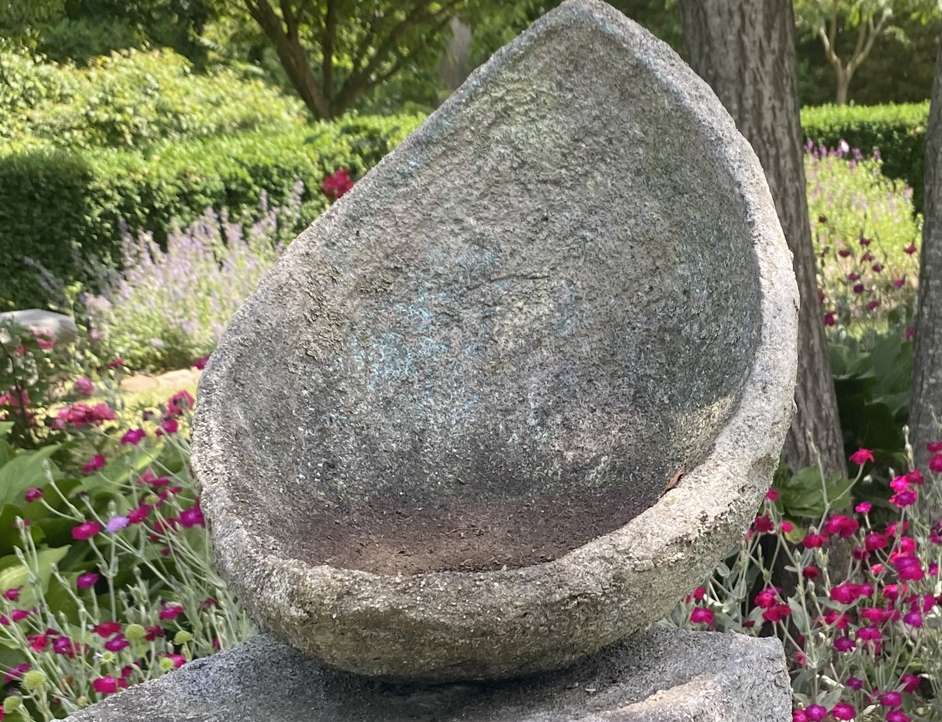
BRIDGEPORT, Conn. – In addition to the more than a dozen gardens providing critical habitat for native insects and pollinators on Zoo grounds, the Zoo’s Education Department has laid the framework for additional pollinator gardens off Zoo grounds as well.
With the assistance of a $50,000, two-year Amplify grant from M&T Bank, members of the Education Department are engaging the community in hands-on work to help native insects, including the more than 300 species of bees found in Connecticut, as well as butterflies, moths, flies, and beetles. Developed as a way to extend the Zoo’s Cool Blue Bridgeport program, a climate change educational series that offers free Saturday admission to Bridgeport residents throughout the school year, the goal is to engage Bridgeport residents in active conservation work. After pitching the program to the City of Bridgeport’s Sustainability Manager Chadwick Schroeder, they were given the go ahead.
Educators Deszani Flemmings and Zoe Glover selected three locations: a 1,000 square foot space at the Fairchild Wheeler Inter-district Magnet High School; a 3,500 square foot space in Beardsley Park across from the Zoo’s entrance; and a 200 square foot space at The Discovery Museum. Flemmings and Glover began by teaching students and volunteers to prep the sites, with lessons on climate change, soil composition, and pollination. The goal is to plant three to five gardens within two years.
“By engaging members of the community, we have the intention to create supportive ecosystems for pollinators,” said Flemmings. “This is just the start. We want those three communities to take ownership of these projects.”
Education Curator Jim Knox said that many dozens of species will benefit from these gardens, and added, “When you count the insects and plants, we will be providing habitat for more species than we have in the Zoo.”
On Zoo grounds, there are seven individual gardens that provide food and shelter for pollinators. Plants included are those that provide sustenance for the entire life cycle of butterflies, from caterpillar to butterfly or moth, as well as those that are food once they’ve metamorphosed. Although there have been gardens at the Zoo for decades, the first designated pollinator garden was planted in 2009. Another garden was added in front of the Zoo’s Commissary in 2018, a gift from Northeast Horticultural Services, and new sections were added outside the Kathy Brady Education Center this year.
The Zoo also has installed rainwater gardens in conjunction with Save the Sound. Those gardens in paved areas provide for rainwater seepage into the ground, reducing the amount of water runoff into nearby freshwater tributaries. Three wildlife ponds can be found near the Hanson Building, providing a home for frogs and other amphibians.
In addition to the formal gardens, animal habitats are designed with “passive pollinator gardens.” The new Andean Bear habitat, for example, was designed with all native plant material that creates a natural environment for bears, but also provides food and shelter for insects. Other native plantings can be found in the Spider Monkey habitat, and the New England Farmyard. In addition, “buffer zones,” which are the areas between animal habitats and guest walkways, are frequently planted with pollinator-friendly plants and native material.
Horticulture Manager Jonathan Dancho explained that the Zoo holds four different garden certifications: Monarch Waystation, Pollinator Pathway, National Wildlife Federation’s Certified Wildlife Habitat and the North American Butterfly Association. The Zoo considers multiple pollinators when choosing garden material, including bumblebees, native solitary bees, bats, and plants needed to combat the decline of the Monarch butterfly.
“When we do add non-native plants, it’s because we’re trying to mimic the native eco-system for a particular species, or it’s an ornamental garden,” Dancho said. In addition, he said that pollinators are not drawn only to flowers. “A lot of pollination on Zoo grounds is due to our mature trees.”
Tickets must be purchased on the Zoo’s website at beardsleyzoo.org.